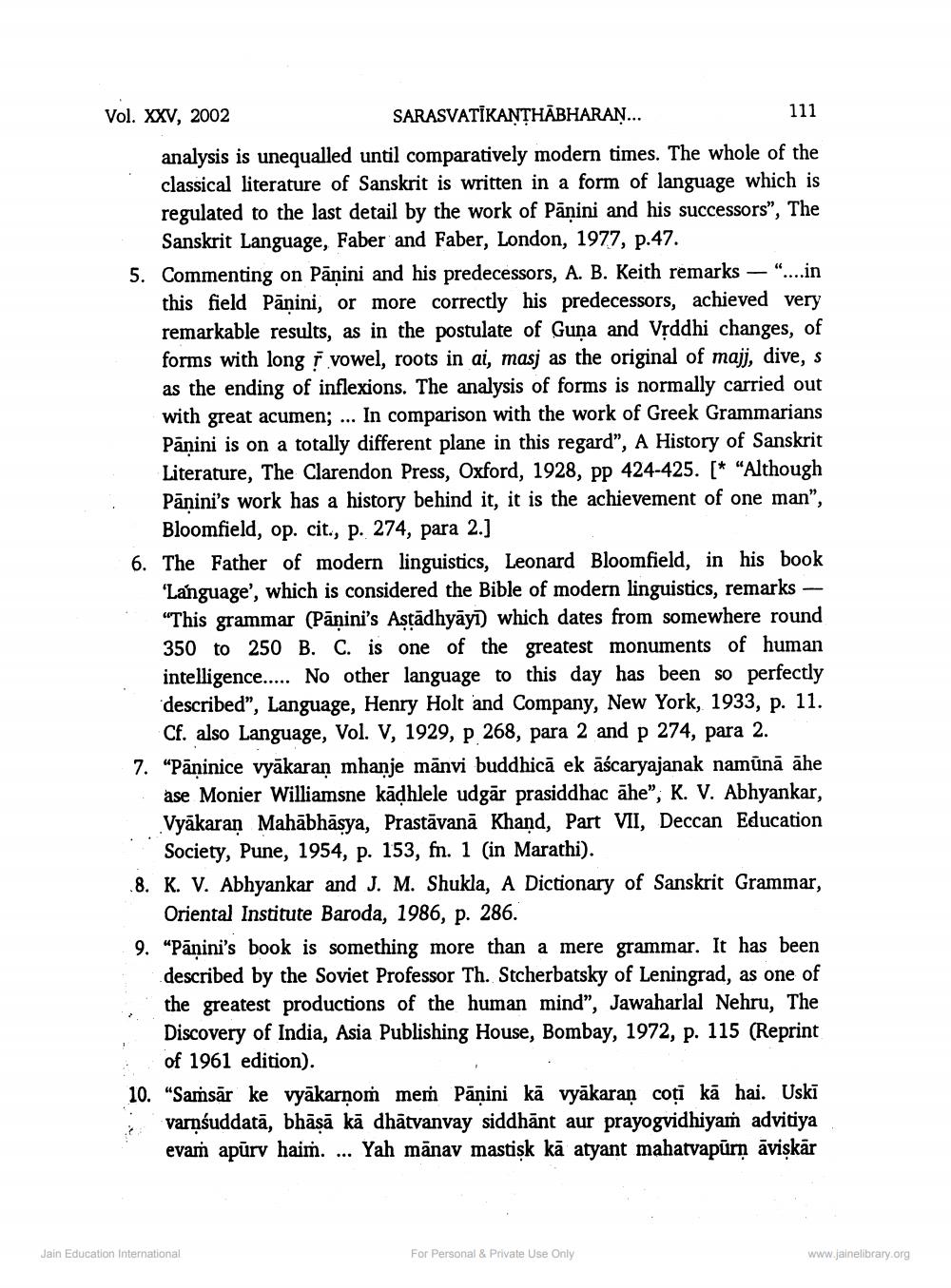________________
Vol. XXV, 2002 SARASVATIKANTHABHARAN...
111 analysis is unequalled until comparatively modern times. The whole of the classical literature of Sanskrit is written in a form of language which is regulated to the last detail by the work of Panini and his successors", The
Sanskrit Language, Faber and Faber, London, 1977, p.47. 5. Commenting on Pāņini and his predecessors, A. B. Keith remarks — “....in
this field Pāṇini, or more correctly his predecessors, achieved very remarkable results, as in the postulate of Guņa and VỊddhi changes, of forms with long s vowel, roots in ai, masj as the original of majj, dive, s as the ending of inflexions. The analysis of forms is normally carried out with great acumen; ... In comparison with the work of Greek Grammarians Panini is on a totally different plane in this regard”, A History of Sanskrit Literature, The Clarendon Press, Oxford, 1928, pp 424-425. [* "Although Pānini's work has a history behind it, it is the achievement of one man",
Bloomfield, op. cit., p. 274, para 2.) 6. The Father of modern linguistics, Leonard Bloomfield, in his book
'Language', which is considered the Bible of modern linguistics, remarks"This grammar (Pānini's Astädhyāyi) which dates from somewhere round 350 to 250 B. C. is one of the greatest monuments of human intelligence..... No other language to this day has been so perfectly described", Language, Henry Holt and Company, New York, 1933, p. 11.
Cf. also Language, Vol. V, 1929, p 268, para 2 and p 274, para 2. 7. "Paninice vyäkaran mhanje mānvi buddhicā ek āścaryajanak namūnā āhe
ase Monier Williamsne kāļhlele udgār prasiddhac āhe", K. V. Abhyankar, Vyākaran Mahābhāsya, Prastāvanā Khand, Part VII, Deccan Education
Society, Pune, 1954, p. 153, fn. 1 (in Marathi). .8. K. V. Abhyankar and J. M. Shukla, A Dictionary of Sanskrit Grammar,
Oriental Institute Baroda, 1986, p. 286. 9. "Pānini's book is something more than a mere grammar. It has been
described by the Soviet Professor Th. Stcherbatsky of Leningrad, as one of the greatest productions of the human mind", Jawaharlal Nehru, The Discovery of India, Asia Publishing House, Bombay, 1972, p. 115 (Reprint
of 1961 edition) 10. “Samsār ke vyākarņom mem Pāṇini kā vyākaran coti kā hai. Uski
varníuddatā, bhāsā kā dhātvanvay siddhānt aur prayogvidhiyam advitiya evam apūrv haim. ... Yah mänav mastisk kā atyant mahatvapūrn āviskar
tha
Jain Education International
For Personal & Private Use Only
www.jainelibrary.org




